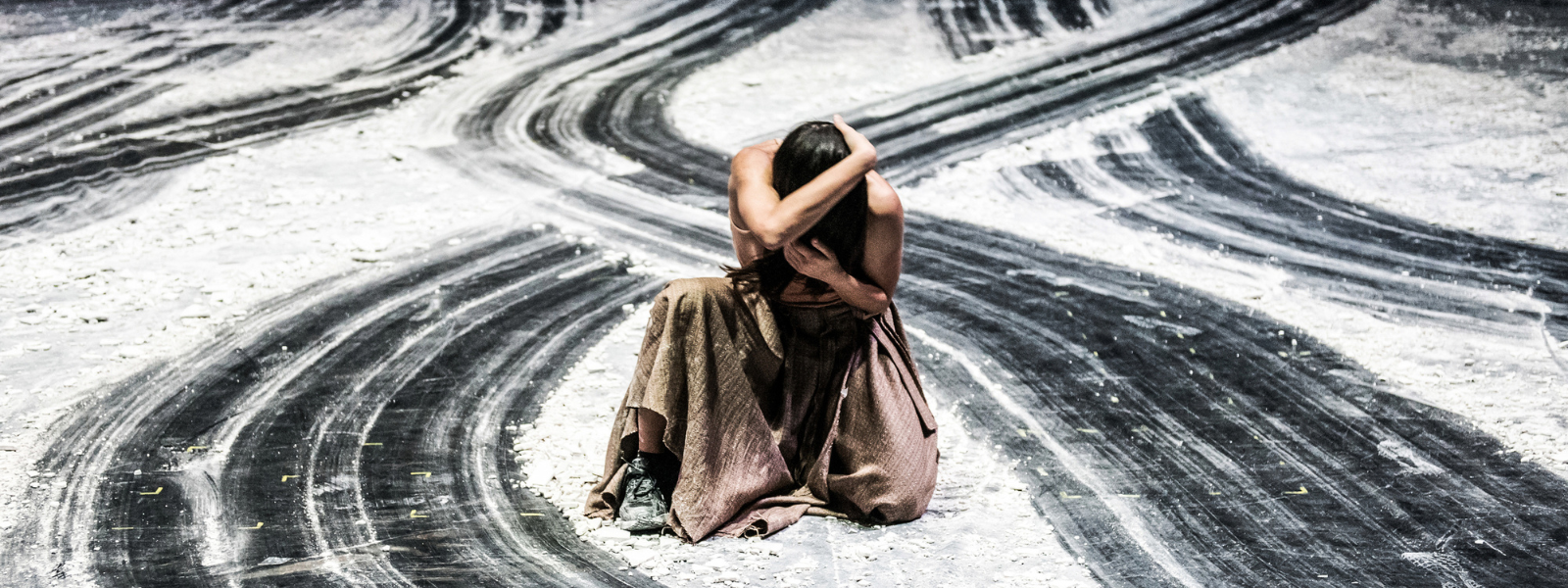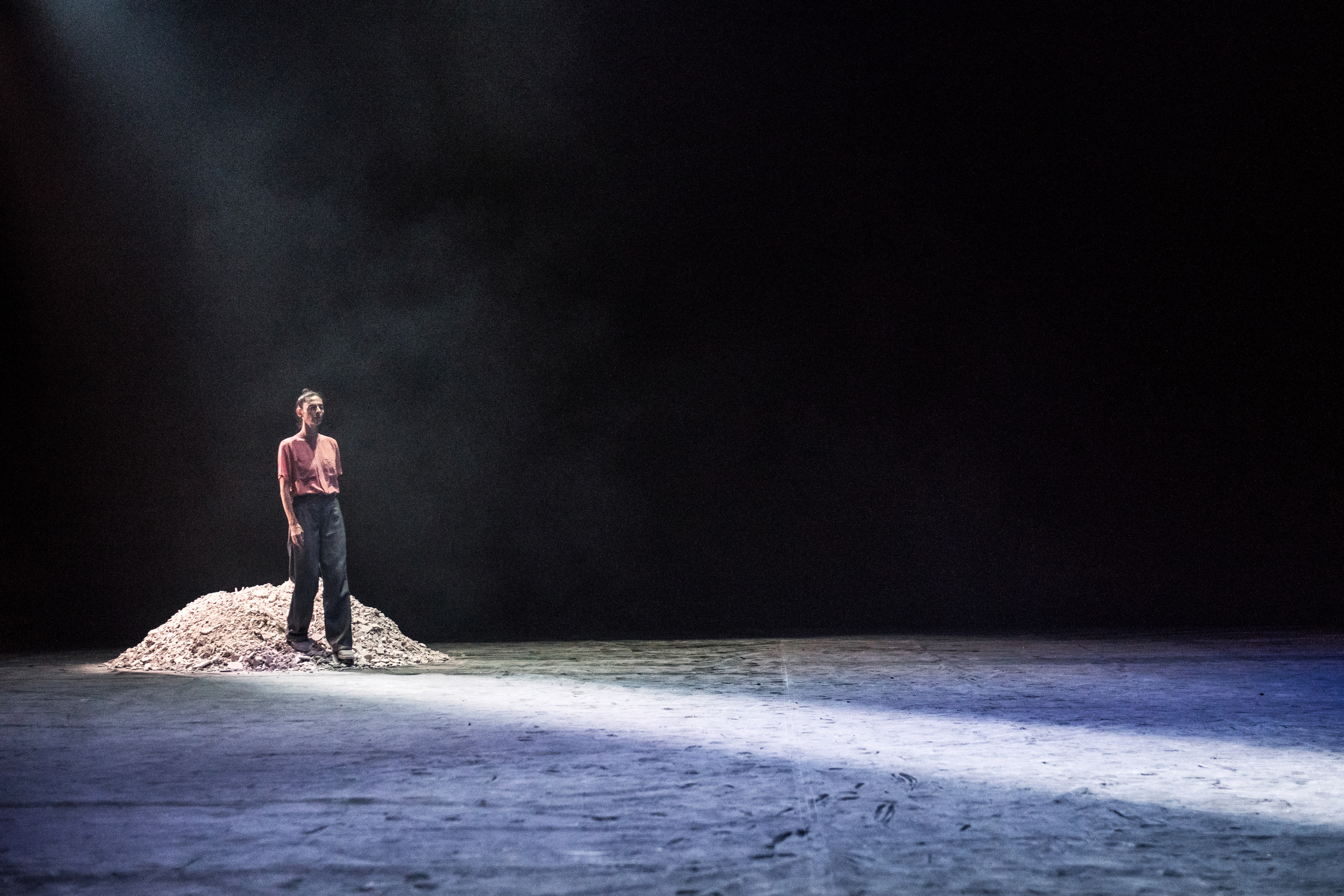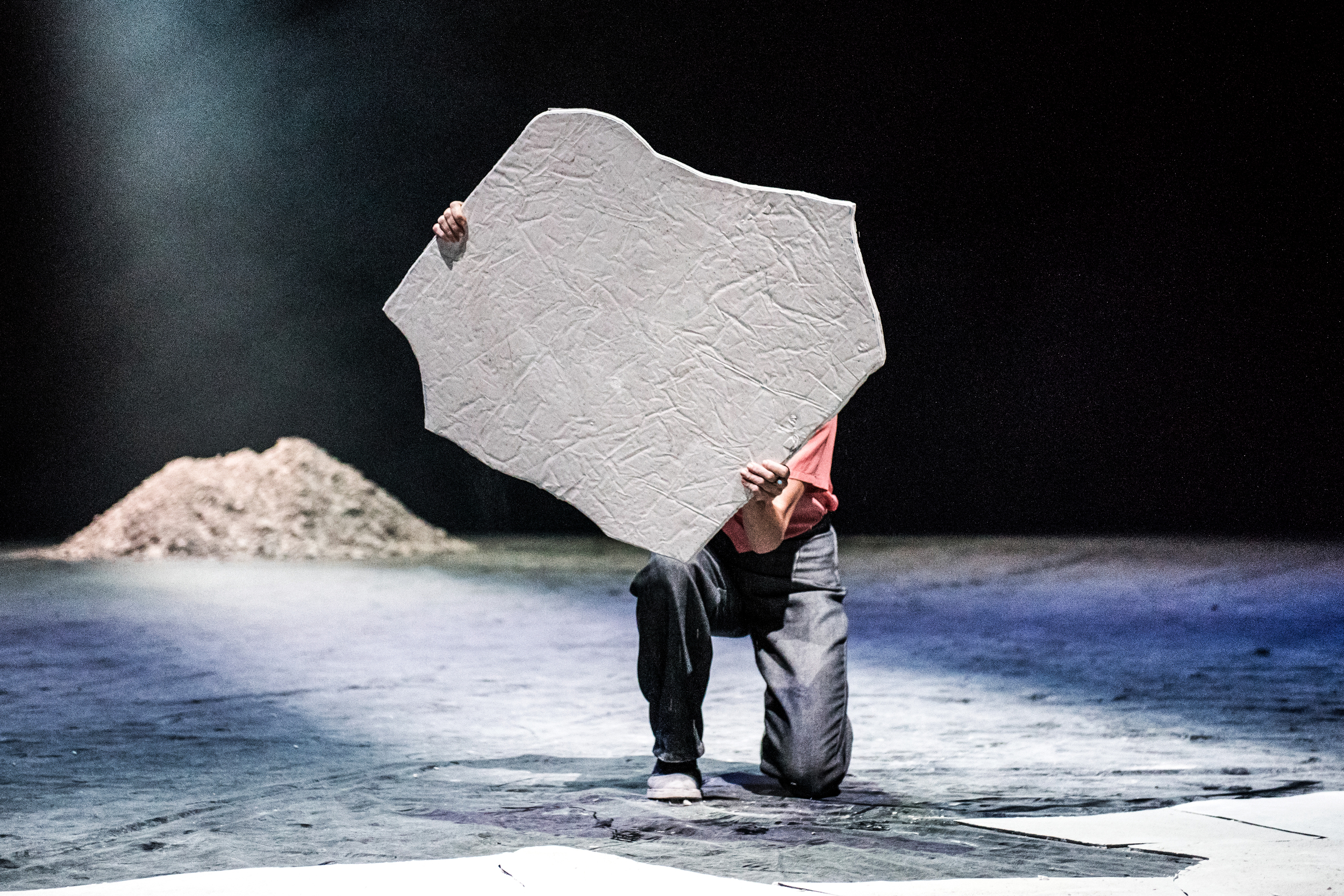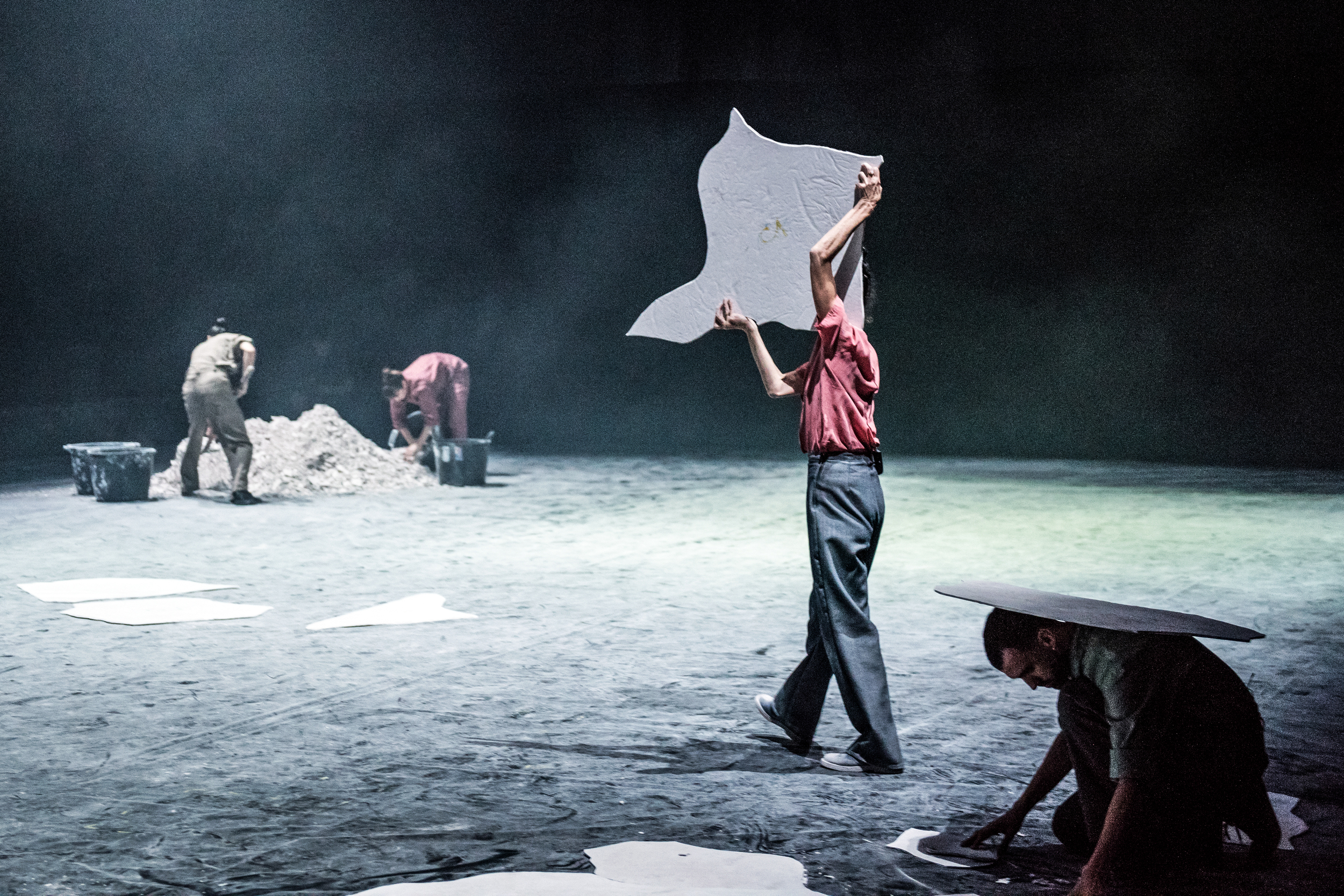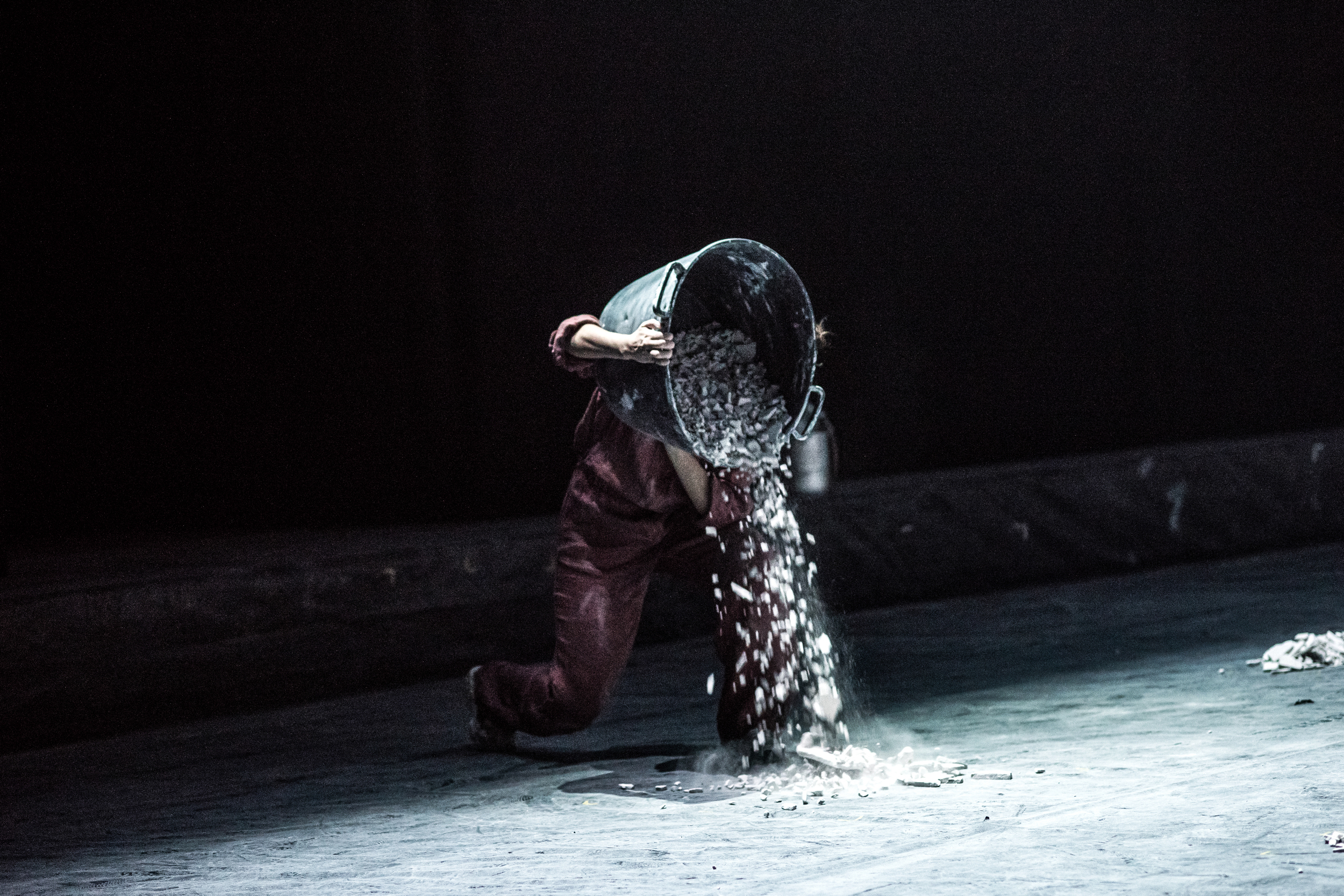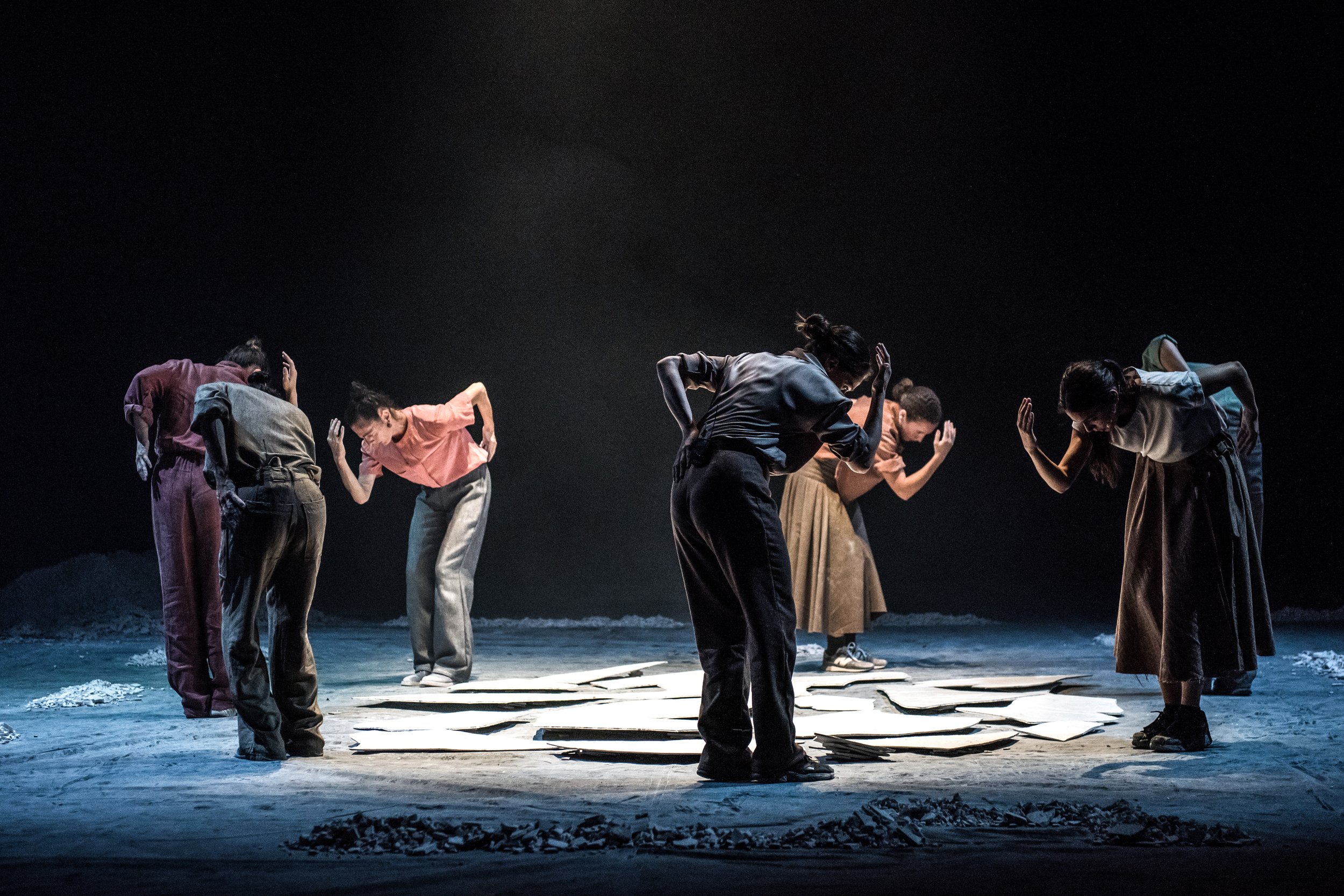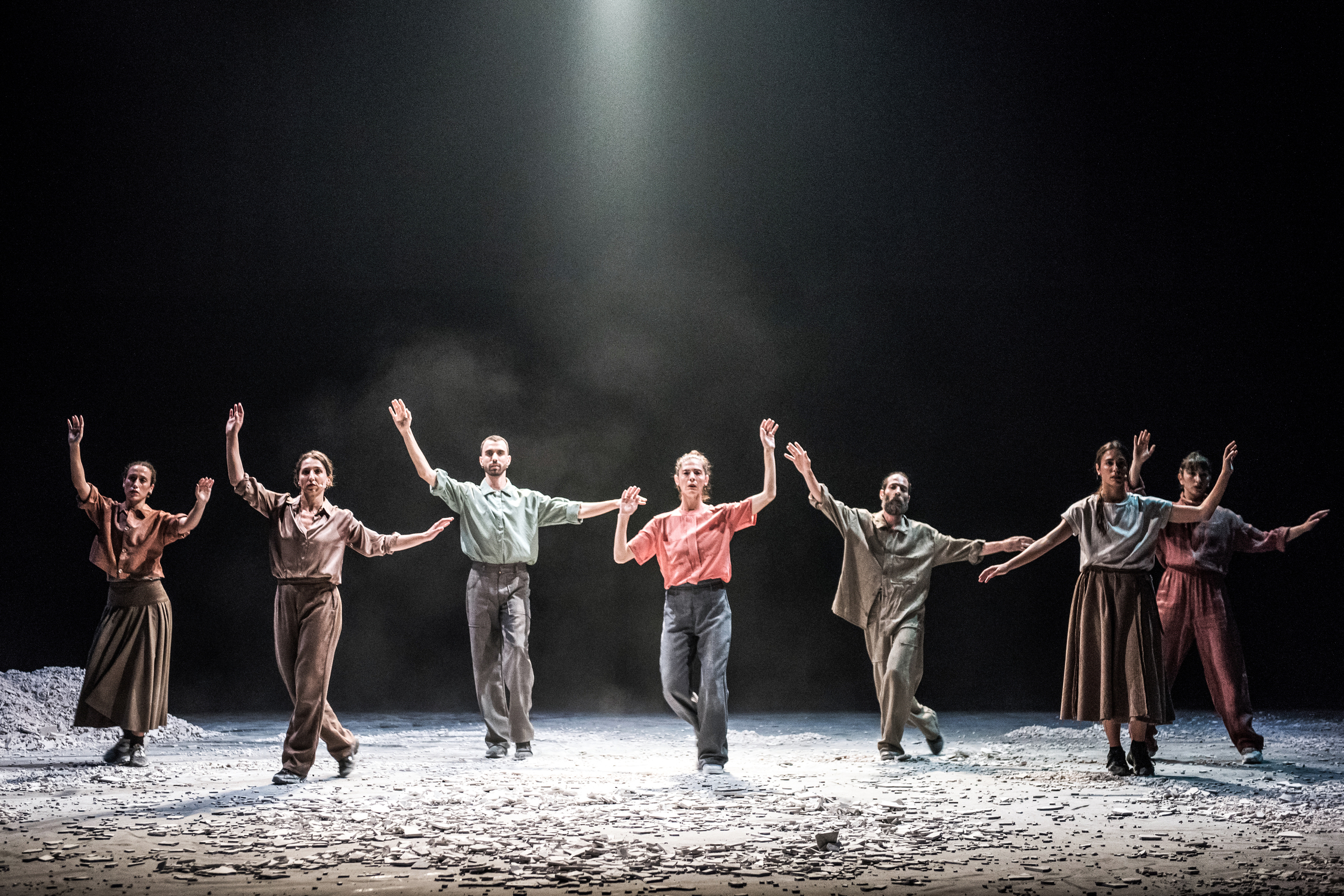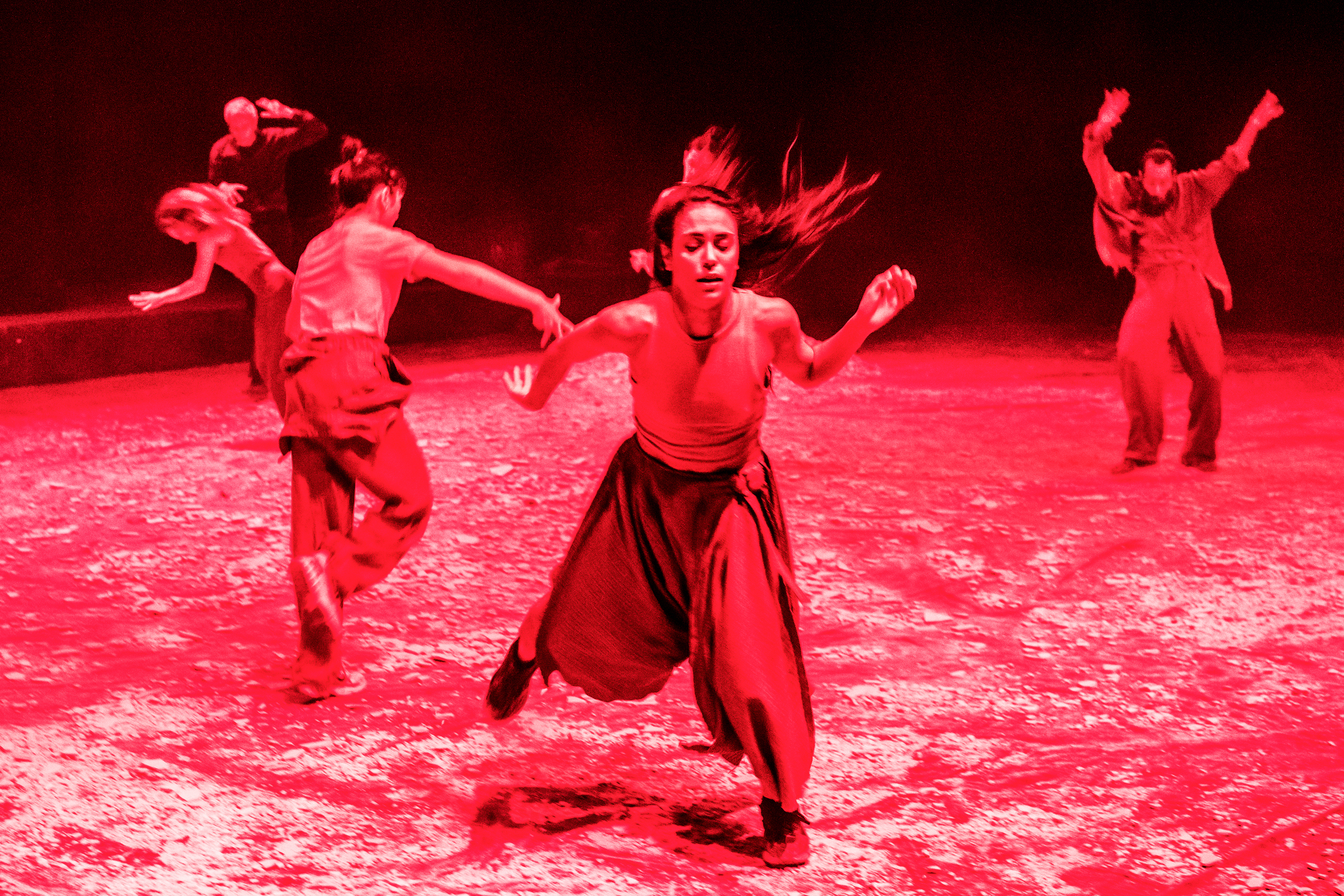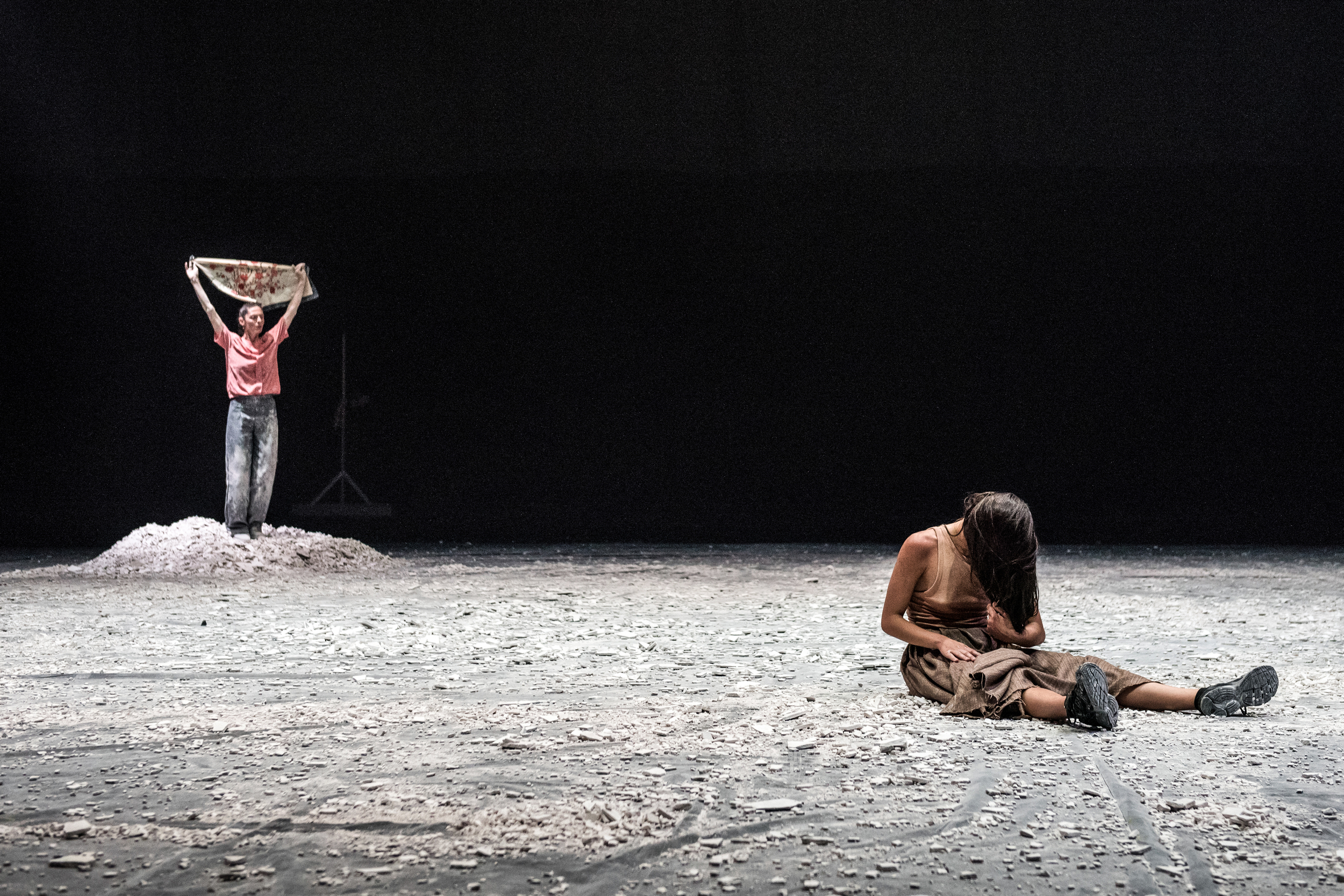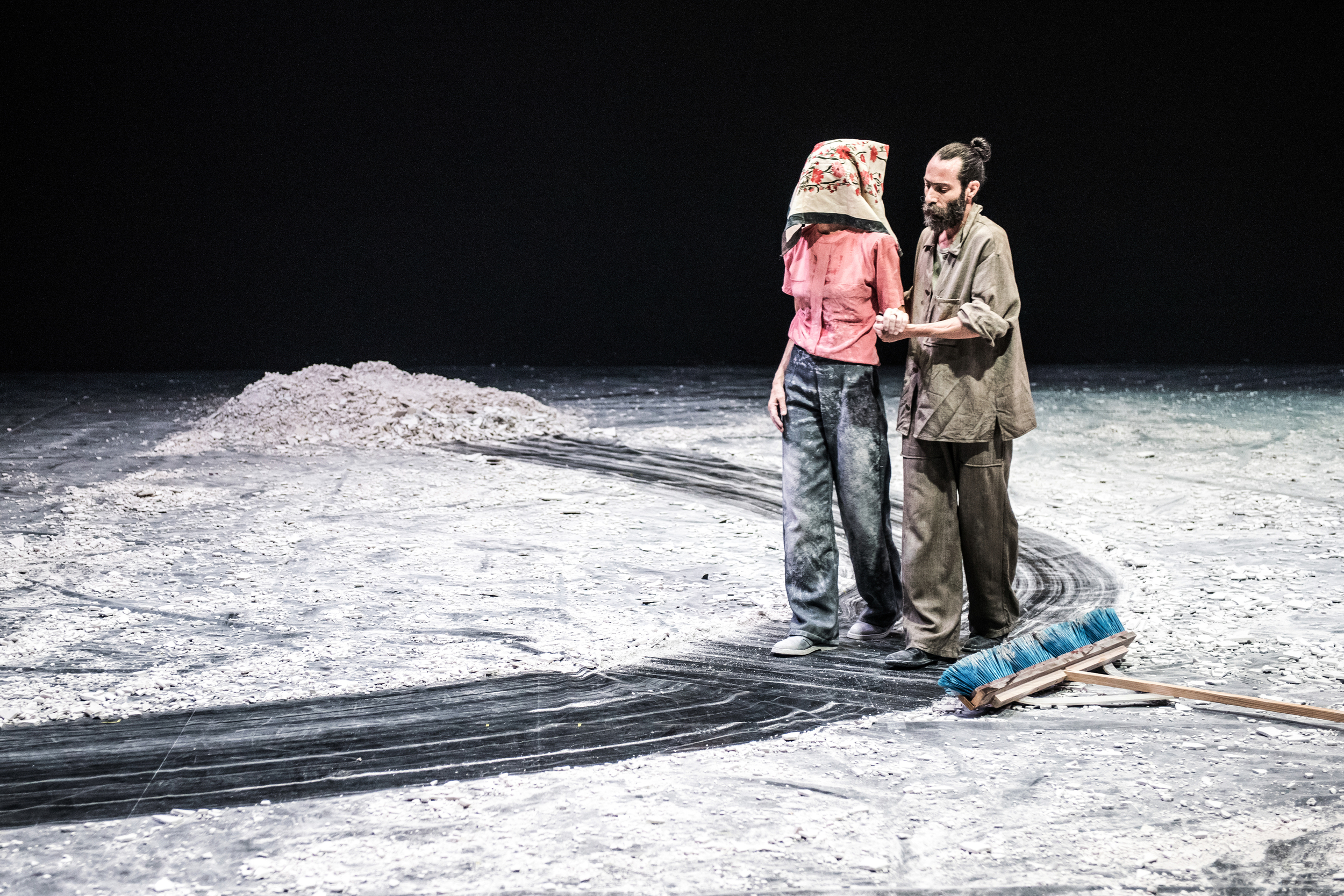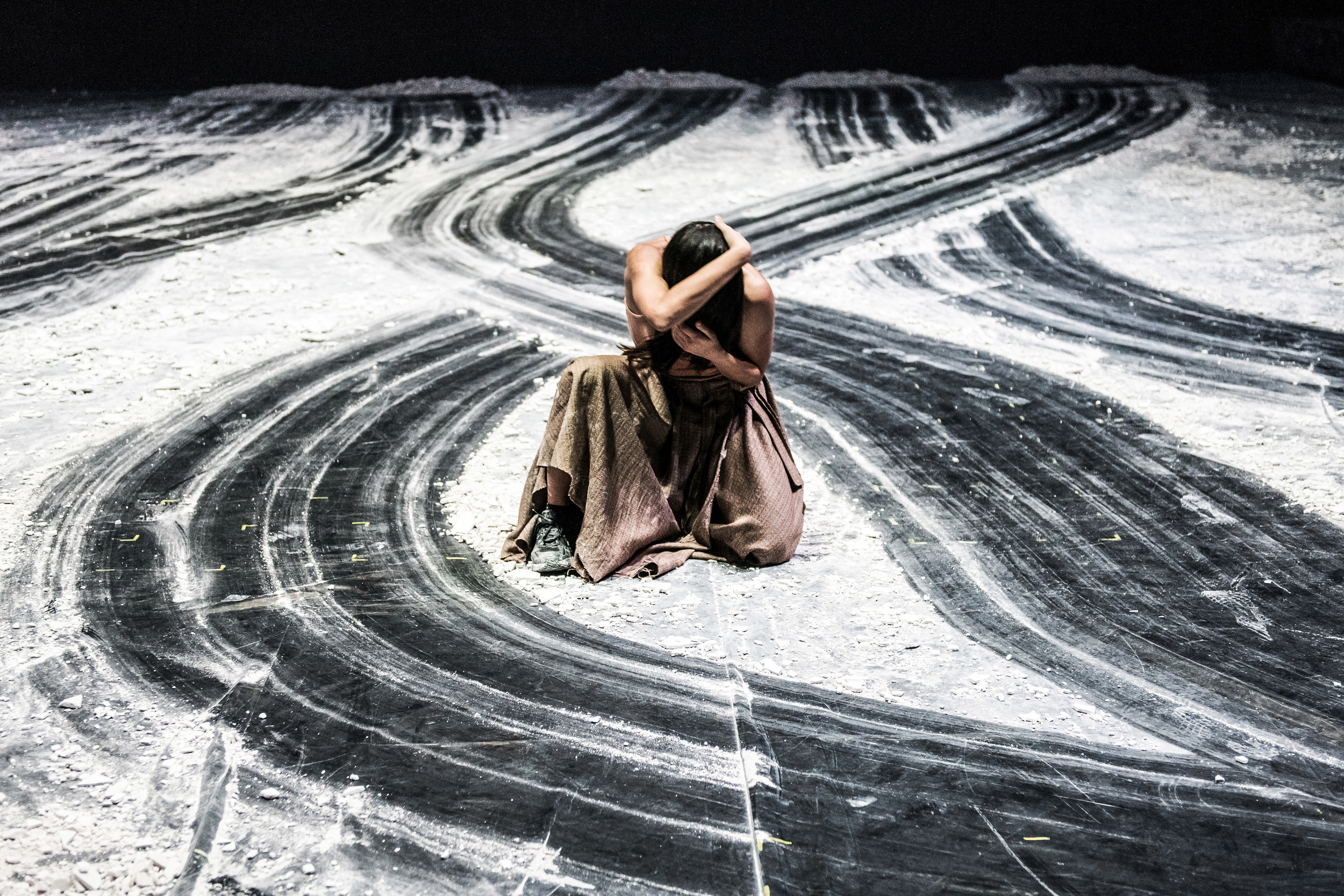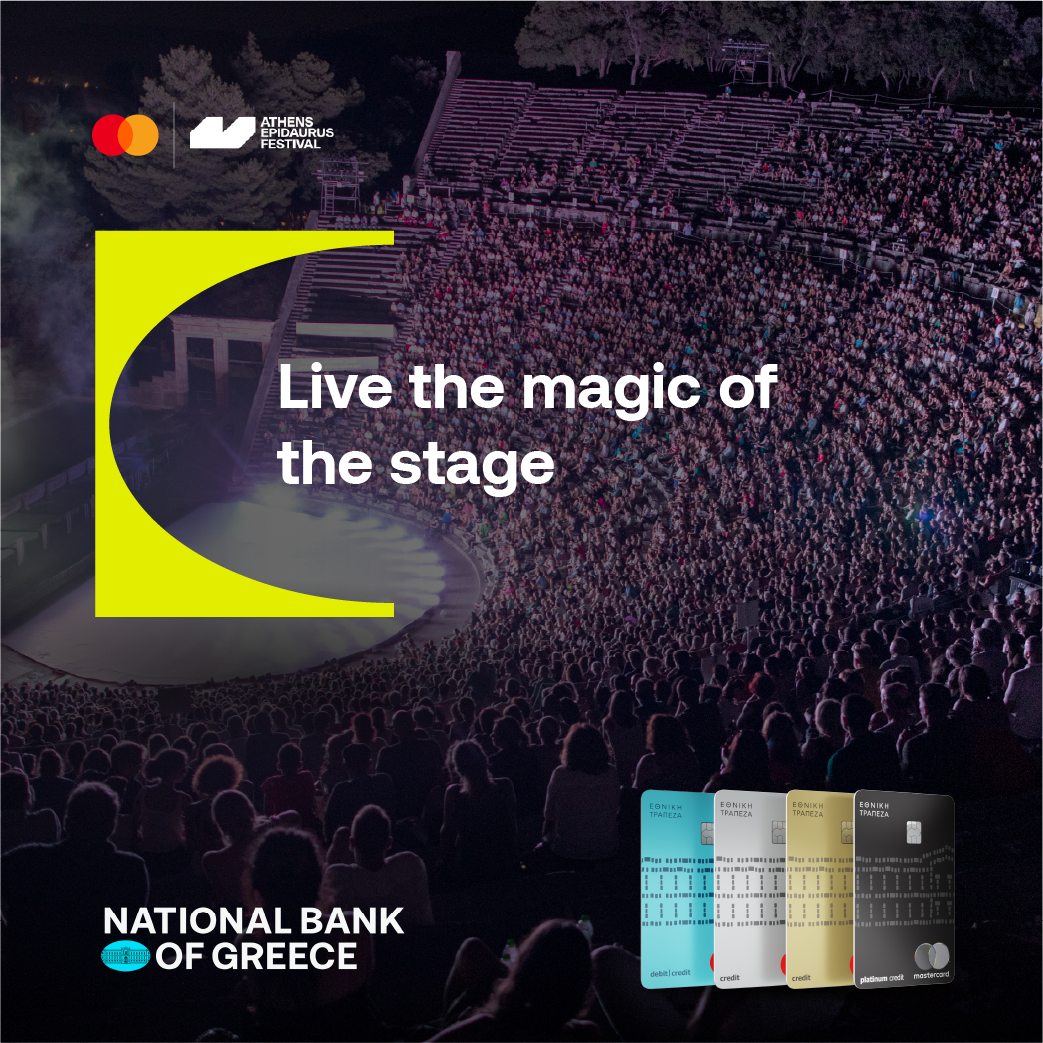In her recent works and research, Tzeni Argyriou has been treating dance as an expression of the human need for contact and as a means of reconnecting with nature and the community –the already-existing one and the one created on spot at each gathering. She is inspired by the legacy of traditional and popular Greek dances as well as contemporary choreographic practices, and she assigns a central role to the relationship between dance and live music.
Can dance express the problems, the questions, and the need of modern humans for sociability today? Dancers and musicians shape the visual landscape, as they create a record of sounds and movements bringing memories of dances from the depths of time but also from the present, and they gradually widen the concentric circles of a collective celebration.
Can we invent new dances to express us and new rituals to unite us? What would such a festivity look like? Could we all ‘lend a hand’ in creating it? After all, this is what ‘mintati’ means in the villages of Epirus: the gathering to create, with everyone’s help, something needed by the community.
The MINTATI project was born in the light of these questions and thoughts, putting at the centre the concepts of community, collectivity, and solidarity.

Concept – Choreography Tzeni Argyriou
Collaborating visual artist – Set designer Vassilis Gerodimos
Original music composition, performance, sound editing on stage Giorgos Gargalas, Nikos Tsolis
Dramaturgy Christiana Galanopoulou
Lighting design Nysos Vasilopoulos
Costumes Vassilia Rozana
Assistant to the Choreographer Fotini Stamatelopoulou
Assistant to Set Designer Ioanna Plessa
Traditional Dance Instructor Nikos Panagiotou
Cast Nancy Stamatopoulou, Ermis Malkotsis, Ioanna Paraskevopoulou, Sotiria Koutsopetrou, Despina Sanida-Krezia, Tasos Nikas, Sevasti Zafeira, Luke Macaronas
Artistic collaborator Vitoria Kotsalou
Traditional drum Thanassis Makos
Management – Executive Production Delta Pi
Production AMORPHY
Tzeni Argyriou and the team would like to wholeheartedly thank all the participants at the research workshops for their contribution to the research and to the performance.
Special thanks to Alexandros Klidonas, Yorgos Antonatos, Yiannis Malatantis
Dramaturgical note
In the ruptures of our lives, in the intersections of history, in the moments of despair, when everything is destroyed or rebuilt, a connecting material between people emerges. This material, which holds the societies together, this common place or non-place, or in Foucault's terms “some other” (heteron) place, is the space in which the members of a society project their shared identity and their visions of a common future. It is there that they essentially co-create what binds them together as a whole, what immediately points them out as members of their community. Indeterminate is the substance of this material; yet, in some invisible way, it is what gives people the strength to endure.
Is it rituals? Is it welcomes and farewells? Is it festivals and celebrations? Is it shared time? Shared labor? Shared joy? Is it holding hands in a circular dance? Is it hands that hold us and hands we hold? Is it the hand that holds us when we think we're going to fall? Maybe. And maybe it's all of the above, together. Or maybe it is the humanism that takes care of the person next to us, the hand that pulls a refugee from the rubble, or the work that members of a community will put into building an infrastructure to make their lives more affordable (a road, a school, a water fountain). It is the dance we share at every opportunity, the music that comes from the depths of memory and nestles somewhere in our bodies, or perhaps the art that transmutes experience into something intangible yet somehow touching for those who share a culture. It is this space of the connective material withholding the communities that Tzeni Argyriou explores with MINDATI, excavating the archives of the bodies and the imaginary archives of the worlds which inhabit the stage and the amphitheater.
As a metaphor in the world of matter, the plaster, which dominates the set of the performance and is transformed into infinite images by the movements of the dancers, is also a connecting material. Landscapes, sites and ruins, boundaries, borders and rubble, create images familiar to us: nature gives way to the architectural landscape, both a human work and an offspring of civilization, and then to a landscape of destruction, an open field for reconstruction. Ancient cities destroyed by time, or stoned by volcanic material, modern cities flattened by earthquakes, cities-battlefields ruined by the war. Civilisations emerging and setting pass through our field of vision against the background of eternity which, contemplated from our small rock of the present, seems mixing indissolubly past and future.
And while the cities we once loved are being mercilessly bombed, while we are mourning for genocides that are nightmarishly re-growing to make the "desert lands" of our time, while the rubble has so much encirlced us that we risk getting used to it even though it is drowning us, while we think we can't take any more pain, fear or suffering, a unifying force drags us into a dance of "no tomorrow", and suddenly everything changes. And if this force has not yet aroused us, it is time to seek it, to invent it, to construct it, with an eye to the future. What could be this festivity, this “panigyri” of the future which would bear our identity -dances connected to the earth and to the times when the cycle of time was defined by rural works- while at the same time it would bear the memories of all the parties of our youth, of all the rave parties that we envied, of all the revelries we dreamed of, of the Woodstocks that marked us, of all the discos that defined us and of all the parties of the future which are to change the world? What ceremonies will we create using age-old memories and materials of today to unite and rescue us?
In times torn by wars and disasters, at a moment when lack of hope and fear for tomorrow has almost paralyzed us, Tzeni Argyriou seeks a way to connect, a celebration to unite, a dance that will carry both our past and our future into its DNA, a ceremony to mourn and to enable us to be reborn; and, along with her team, they generously share this precious material with the community created each time with the performance's audience; they listen, they integrate and they reach out; and this is, as far as I know, the deepest political action artists can take in the actual historical moment.
Christiana Galanopoulou
Art historian, dramaturge



